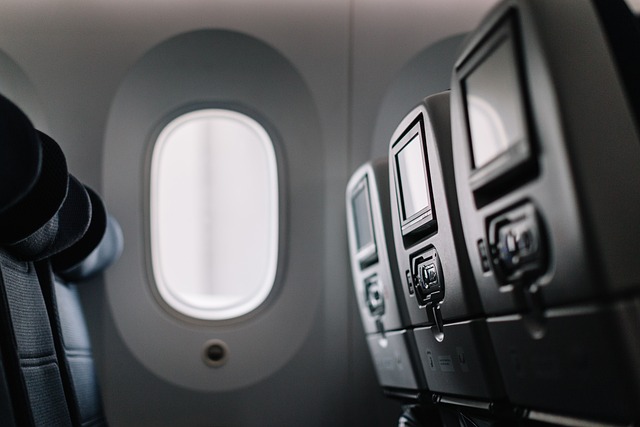
The thrill of travel often comes hand in hand with the challenge of overcoming various fears and anxieties. For many people, the prospect of turbulence during a flight can be a significant source of stress. Turbulence on a plane can lead to flight anxiety which can be crippling for many people. If you are afraid of flying due to turbulence, all hope is not lost. There are plenty of coping mechanisms that can empower you to manage or even overcome your flying anxiety. Conquering your plane anxiety will allow you to enjoy the journey and become more comfortable during the ride.

Understanding why turbulence happens
What is turbulence? The first step to overcoming your flight anxiety is to understand why turbulence happens in the first place. Turbulence is the irregular flow of air that often occurs during flights and can lead to sudden changes in the aircraft’s speed, altitude, and attitude.
These irregular air movements are often a result of changes in air pressure, air currents, or atmospheric conditions.
Is turbulence dangerous?
Although turbulence can be unsettling, it is rarely a cause for concern in terms of the safety of the flight. Airplanes are designed to withstand even the heaviest of turbulence, and pilots are trained to navigate through it safely. Turbulence is completely normal and is an expected part of air travel, and the bumps you experience when riding on a plane can be compared to a car going over a pothole.

How to cope with turbulence anxiety
Even though turbulence is not dangerous, it is still unsettling for many passengers. If you find yourself gripping the seat handles at even the slightest movement of the plane, then you may want to consider taking steps to better manage your fear. Here are a few of our top travel tips on how to deal with flying anxiety due to turbulence.
1. Educate yourself
If you are afraid of flying, then knowledge is one of the most powerful tools you can utilize. Understanding the science behind turbulence, learning about aviation safety standards, and becoming familiar with the statistics of air travel safety can help dispel irrational fears. For example, it is important to remember that it is almost unheard of for turbulence to cause a crash.
2. Practice mindfulness
Incorporating mindfulness and relaxation techniques into your pre-flight routine can significantly reduce plane anxiety. Practices such as deep breathing, meditation, and progressive muscle relaxation can help calm the mind and alleviate physical tension. These techniques are not only effective during turbulence but can also help you to stay calm during busy travel days.
3. Distract yourself
Keep your mind occupied with distractions like movies, music, books, or games. If your plane does not come with televisions in the headrests, then you may want to consider bringing a personal entertainment device or reading material that can keep your mind off of turbulence and help you pass the time quickly. Engaging in fun activities during this time can also help you to create a positive association with flying.
4. Choose the right seat
Seat selection can make a huge difference in how turbulence feels during your flight. Seats at the back and front of the plane tend to experience the most turbulence. On the other hand, seats over the wings generally experience less motion than those at the front or back of the aircraft. Sitting in an aisle seat or one near the center of the plane can also provide a more stable ride.
5. Positive visualization
Try to replace any negative thoughts with positive imagery. During turbulence, practice visualizing yourself arriving safely at your destination and focus on the positive experiences awaiting you. This small mental shift can help you to view turbulence as a minor inconvenience rather than a threat to your well-being.
6. Talk to the cabin crew
Flight attendants are expertly trained to handle passenger concerns and are an incredibly valuable resource for reassurance. If you are afraid of flying, don’t hesitate to let the cabin crew know. If they are aware of your fear, then they can check on you throughout the flight and provide information on the current conditions, offer reassurance, and assist with any specific needs you may have.
7. Converse with your seatmate
Striking up a conversation with the person sitting next to you can help to take your mind off of any turbulence you may be experiencing. Introduce yourself and talk about your travel destination and what you might do when you get there. This allows you to focus on your seatmate’s voice and pay attention to something other than the movement of the plane.
8. Talk to a professional
If you have severe turbulence anxiety that doesn’t seem to go away with any of the above techniques, then you should never feel afraid to seek professional help. A mental health professional or a doctor may be able to provide you with additional tools to help manage your flight anxiety.

Afraid of flying? Overcome your flight anxiety today
Dealing with turbulence anxiety is a personal journey that requires a combination of understanding, preparation, and coping strategies. By educating yourself on the safety of air travel, you can turn your fear of flying into a manageable facet of your journey. It is important to acknowledge and celebrate every successful flight you complete, no matter how short or routine they are. When you recognize and reward yourself for overcoming your anxiety, you can reinforce positive associations with air travel and gain more confidence for future flights.



